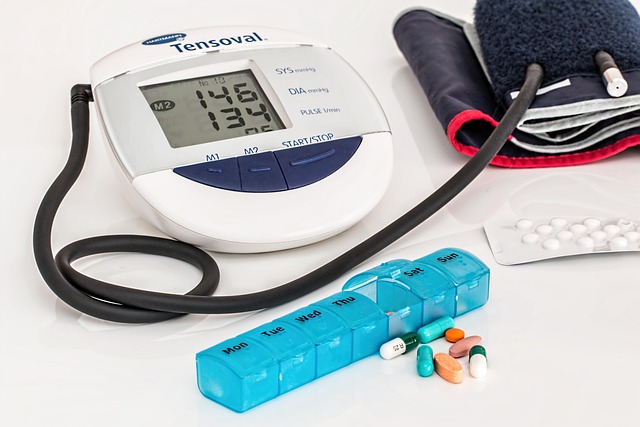Triple Negative Breast Cancer: Key Symptoms and Early Signs
Triple negative breast cancer (TNBC) represents approximately 10-15% of all breast cancer diagnoses, yet it often presents unique challenges in detection and treatment. This aggressive form of breast cancer lacks three key receptors that many other breast cancers possess, making early recognition of symptoms particularly crucial for effective treatment outcomes. Understanding the warning signs, risk factors, and diagnostic approaches can significantly impact treatment success and long-term prognosis for patients facing this diagnosis.

Triple negative breast cancer, often abbreviated as TNBC, represents approximately 10 to 15 percent of all breast cancer diagnoses. This subtype is characterized by the absence of estrogen receptors, progesterone receptors, and HER2 protein, which means it does not respond to hormonal therapy or treatments targeting HER2. TNBC tends to be more aggressive and is more likely to recur within the first few years after treatment. Early detection through awareness of symptoms and regular screening remains critical for improving survival rates and treatment effectiveness.
Common Signs and Physical Symptoms of TNBC
The physical symptoms of triple negative breast cancer often mirror those of other breast cancer types. The most common sign is a new lump or mass in the breast, which may feel firm and irregular in shape. This lump is typically painless, though some individuals may experience discomfort. Other physical symptoms include changes in breast size or shape, skin dimpling or puckering that resembles an orange peel, nipple retraction or inversion, and unexplained nipple discharge that may be clear or bloody. Redness, scaliness, or thickening of the breast skin or nipple area can also indicate underlying changes that warrant medical evaluation. Swelling in part or all of the breast, even without a distinct lump, should not be ignored. Some people may notice swollen lymph nodes under the arm or near the collarbone, which can signal that cancer has spread beyond the breast tissue.
Early Indicators That May Signal TNBC
Early indicators of triple negative breast cancer may be subtle and easily overlooked. Many individuals first notice changes during routine self-examinations or through clinical breast exams. A persistent lump that does not disappear after a menstrual cycle is a key warning sign. Changes in breast texture, such as areas that feel thicker or harder than surrounding tissue, should prompt further investigation. Unexplained breast pain, while less common in TNBC, can sometimes be an early symptom, especially if it persists or worsens over time. Skin changes, including redness or a rash on the breast that does not respond to typical treatments, may indicate inflammatory breast cancer, a rare but aggressive form that can also be triple negative. Nipple changes, such as sudden inversion or discharge, particularly if it occurs in only one breast, are important early indicators. Because TNBC tends to grow and spread more quickly than other breast cancer types, any new or unusual breast changes should be evaluated promptly by a healthcare professional. Women under 40, African American women, and those with BRCA1 gene mutations face higher risks for developing TNBC and should be particularly vigilant about monitoring for early signs.
Understanding Risk Factors and Prevention
Several risk factors increase the likelihood of developing triple negative breast cancer. Age plays a role, as TNBC is more commonly diagnosed in younger women, particularly those under 40. Genetic mutations, especially in the BRCA1 gene, significantly elevate risk. Family history of breast or ovarian cancer also contributes to increased susceptibility. Race and ethnicity are important factors, with African American and Hispanic women experiencing higher rates of TNBC compared to other populations. Obesity and lack of physical activity have been linked to increased breast cancer risk overall, including TNBC. While some risk factors like genetics and age cannot be modified, lifestyle changes can help reduce overall breast cancer risk. Maintaining a healthy weight through balanced nutrition and regular exercise is beneficial. Limiting alcohol consumption and avoiding tobacco products support overall health and may reduce cancer risk. Breastfeeding, when possible, has been associated with lower breast cancer risk. For individuals with strong family histories or known genetic mutations, preventive measures such as enhanced screening, prophylactic medications, or risk-reducing surgeries may be considered after consultation with healthcare providers. Regular screening through mammography and clinical breast exams enables early detection, which is particularly important for TNBC given its aggressive nature.
Diagnostic Procedures and Testing
When symptoms suggest possible breast cancer, a series of diagnostic procedures helps confirm the diagnosis and determine the cancer subtype. The initial evaluation typically includes a clinical breast exam performed by a healthcare provider, who assesses any lumps, skin changes, or other abnormalities. Imaging studies follow, with mammography serving as the primary screening tool. Mammograms use low-dose X-rays to detect abnormalities in breast tissue. Ultrasound imaging may be used to further evaluate suspicious areas, particularly in younger women with denser breast tissue. Magnetic resonance imaging provides detailed images and is often recommended for high-risk individuals or when other imaging results are inconclusive. If imaging reveals concerning findings, a biopsy is necessary to confirm cancer and determine its characteristics. During a biopsy, a small tissue sample is removed and examined under a microscope. Core needle biopsy is the most common method, though surgical biopsy may be required in some cases. Laboratory analysis of the biopsy sample determines whether the cancer is triple negative by testing for estrogen receptors, progesterone receptors, and HER2 protein. Additional molecular testing may be performed to identify specific genetic mutations or characteristics that could influence treatment decisions. Staging procedures, including additional imaging such as CT scans, bone scans, or PET scans, help determine whether cancer has spread beyond the breast.
Follow-up Care and Monitoring
After treatment for triple negative breast cancer, ongoing follow-up care and monitoring are essential for detecting recurrence and managing long-term health. The first few years after treatment are particularly critical, as TNBC has a higher risk of early recurrence compared to other breast cancer subtypes. Follow-up visits typically occur every three to six months during the first few years, then annually thereafter. These appointments include physical examinations, review of symptoms, and discussions about any new concerns. Routine mammography continues as part of surveillance, usually starting six to twelve months after completing radiation therapy, then annually. Additional imaging may be ordered if symptoms or examination findings raise concerns about recurrence. Blood tests are not routinely used for monitoring in the absence of symptoms, as tumor markers are not reliable for TNBC. Patients should remain vigilant for potential signs of recurrence, including new lumps in the breast or chest wall, bone pain, persistent cough or shortness of breath, abdominal pain or swelling, and persistent headaches or neurological symptoms. Beyond cancer surveillance, follow-up care addresses treatment-related side effects and overall wellness. This includes managing lymphedema if lymph nodes were removed, addressing fatigue and emotional health, and monitoring for treatment-related complications such as heart problems or neuropathy. Lifestyle modifications, including maintaining a healthy weight, regular physical activity, and a balanced diet, support overall health and may reduce recurrence risk. Support groups and counseling services provide valuable resources for managing the emotional and psychological aspects of cancer survivorship. Genetic counseling may be recommended for individuals with TNBC, especially younger patients or those with family histories suggesting hereditary cancer syndromes.
Recognizing the symptoms and early signs of triple negative breast cancer enables timely diagnosis and treatment, which can significantly impact outcomes. While TNBC presents unique challenges due to its aggressive nature and limited treatment options compared to other breast cancer types, advances in research continue to improve understanding and therapeutic approaches. Awareness of risk factors, commitment to regular screening, and prompt evaluation of any breast changes remain the most effective strategies for early detection. Individuals diagnosed with TNBC benefit from multidisciplinary care teams and comprehensive treatment plans tailored to their specific situation. Ongoing research into targeted therapies and immunotherapy offers hope for improved outcomes in the future.
This article is for informational purposes only and should not be considered medical advice. Please consult a qualified healthcare professional for personalized guidance and treatment.




